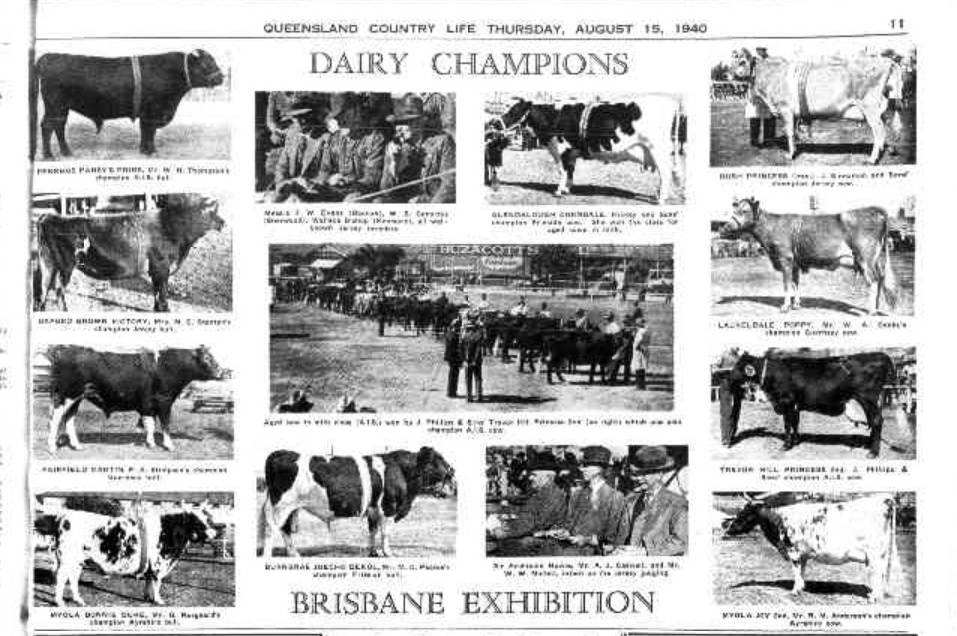
In the 1940s, the essential fat was rationed in Australia, to 1lb (453g) a week per adult, which did not end until June 1950.
In August 1942, Queensland Country Life reported “butter is the play thing of politics” when an inquiry visited Queensland to take evidence justifying a higher price to the producer.
“If it were not for party politics, no such enquiry would be needed; the producer would already have received a return commensurate with butter’s importance as a vital war-time commodity.”
In June 1944, QCL noted “all the butter which had gone from Australia to Britain during the war had been priced at under cost of production.”
“Producers were glad to be able to play their part, but to what extent they could continue to do so and keep body and soul together, was another question.”
The industry has remained tumultuous as we approach the modern day, particularly in the last 25 years.
Like other commodities including wheat and cane, the industry eventually went through the process of deregulation.
For dairy, this process took place in the late 1990s when the Australian Dairy Industry Council approached the federal government about deregulating the drinking milk sector and ending manufacturing milk price support in 1999.
Queensland farmers took to the streets of Brisbane in protest, however there was no stopping the change and the state milk authorities were wound up on July 1, 2000.
In the January 27, 2011 edition an article appeared with the headline “Farmers sour over Coles milk price trim”.
It was the start of what came to be known as the $1/L milk wars. “Coles’ decision to ‘crash’ the price will have a flow-on effect, crashing prices elsewhere,” Queensland Dairyfarmers’ Organisation president Brian Tessmann said at the time.
A week later on February 3, the headline was “Coles ignoring milk industry ire”.
The fresh milk wars dominated headlines for years, with Woolworths and Aldi also matching their prices with Coles.
A Senate inquiry in 2011 found $1/L milk benefited consumers and so the price stayed, however one in three dairy farmers exited the Australian industry by the end of the decade.
“Queensland dairy farmer Greg Dennis hopes that growing demand for fresh, local produce and a consumer backlash against supermarket home-brand offerings will help make his new business venture a success,” QCL wrote in the April 18, 2013 edition.
‘Farmer Gregie’ went on to become a well known face as dairy farmers campaigned for consumers to buy branded milk. His business, Scenic Rim 4Real Milk wasn’t the only brand gaining momentum.
In the July 17, 2014 edition QCL reported “The iconic Malanda Milk branding will return to fresh white milk later this month”.
A few months later on November 27 QCL reported “Maleny Dairies factory owners Ross and Sally Hopper are living the dream after fears deregulation would result in the family farm being sold off in 2000”.
By July 21, 2016 QCL was reporting on Farmer Gregie’s tractor journey from the Scenic Rim to the Atherton Tablelands to raise awareness about dairy’s plight.
In 2018, the drought caught the attention of consumers and as a result, a ‘drought levy’ on milk was introduced. However the move didn’t win over the industry.
“Dairy farmers say they feel like they have been slapped in the face despite supermarket giants Woolworths and Coles announcing they would introduce drought relief campaigns,” QCL wrote on September 27, 2018.
Eventually, the government intervened with the mandatory Dairy Code of Conduct coming into effect on January 1, 2020.
Read the special publication celebrating 85 years of Queensland Country Life here: http://specialpubs.austcommunitymedia.com.au/e-oo/2020/QCWP/0723_01/
























